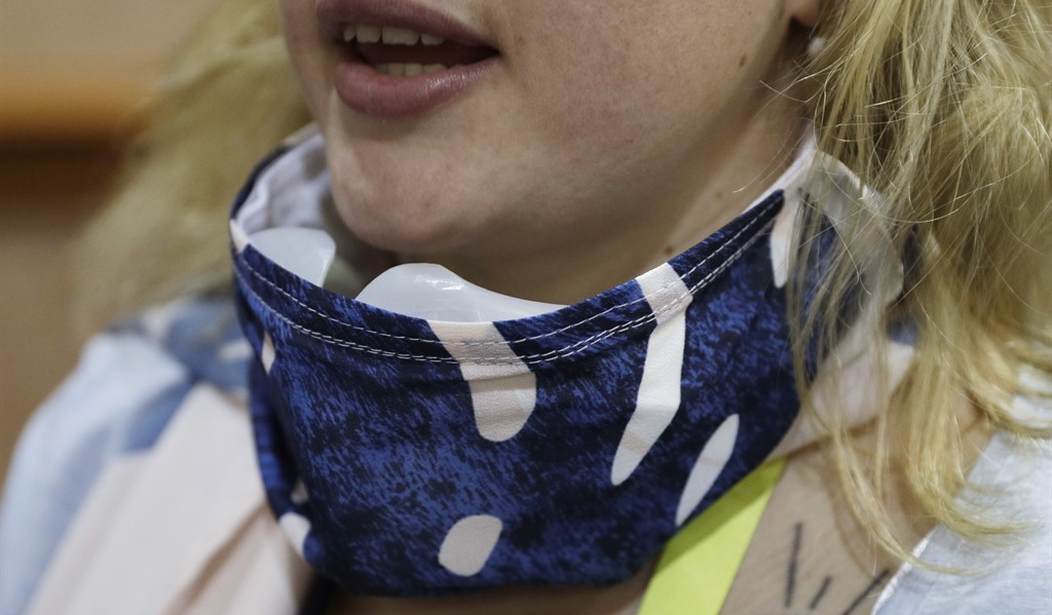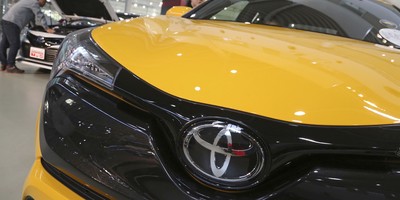If you're working in an office or eating in a restaurant and someone 30 feet away exhales tiny particles of coronavirus, those particles can drift across the room and infect you. Picture cigarette smoke wafting across a room. Same thing. The precautions agencies like the World Health Organization and the federal CDC are telling you to take against this virus aren't good enough. Social distancing -- placing desks and restaurant tables six feet apart -- and washing your hands won't protect you from this airborne virus.
That's not fear-mongering. It's science. New research from the National Academy of Sciences contends that airborne transmission of the virus is "highly virulent" and the "dominant" way it spreads.
On Monday, 239 scientists jointly announced research showing "beyond any reasonable doubt" that "viruses are released during exhalation, talking and coughing in microdroplets small enough to remain aloft in the air," and can spread across a room.
The scientists urged countries opening up after lockdowns to make buildings healthier by improving ventilation and installing air-cleaning technologies. We all need to become indoor environmentalists, focused on the air we breathe.
The scientists cited research showing how three families at three different tables in an air-conditioned restaurant in China all became infected with the virus. One person at table A came in with it, and when he talked he emitted viral droplets that were carried across the room in a stream of air-conditioned air, infecting diners at two other tables.
When you're in a restaurant, you're not wearing a mask, making you more vulnerable. The mounting evidence on airborne transmission underscores the importance of wearing not only masks, but also goggles, eyeglasses or shields. Microparticles of the virus suspended in the air can invade eye membranes. A new report in the journal Lancet found that "eye protection is typically underconsidered."
Recommended
As for improving indoor safety, kudos to Governor Andrew Cuomo for becoming an indoor environmentalist. At his June 29 briefing, he said he was concerned about the airborne virus particles circulating in malls. Unfortunately, he went too far, mandating that they install specific equipment -- HEPA filters -- in their air conditioning before they're allowed to reopen.
That's not necessarily the best technology to protect mall shoppers. Newer technologies can deactivate the virus soon after someone emits it, long before it reaches an air conditioning filter. That means protecting people who are there at the same time as the infected shopper, not just later arrivals.
Mall owners pushed back against Cuomo's mandate, explaining their systems can't handle those filters.
Cuomo's well-intentioned edict shows the problem with government mandates. They're often behind the science and shift the cost onto somebody else.
HEPA filters are used by airlines. Most planes recycle about 30 percent of cabin air through HEPA filters and exhaust the other 70 percent out of the plane. The cabin air is replaced about every three minutes. A plane is an unlikely place to become infected by airborne COVID-19. The risks on a plane are from people seated so close to you that larger viral droplets from their mouth or nose land on your face, or from you picking up traces of the virus from contaminated surfaces and touching your own face.
Few indoor spaces can be fitted like airplanes. But there are technologies to improve indoor air quality. "Healthy buildings should be the first line of defense" against the coronavirus, says Joseph Gardner Allen from Harvard's T.H. Chan School of Public Health. None of the opening plans proposed by the states or the federal CDC propose using technology to improve indoor air quality in workplaces, schools or other buildings. Yet, it's the single most important kind of infrastructure spending the U.S. could make -- a bargain compared with prolonged unemployment benefits. Call it a "Green Indoor Deal."
You may be wondering why you haven't heard this information from the WHO or the CDC. As usual, they're behind on the science. To bring people back into offices, schools, restaurants and stores, we need to face the fact that the coronavirus can spread from one side of a large room to the other, infecting people along the way. It's airborne.
###
Betsy McCaughey is chairman of the Committee to Reduce Infection Deaths and a former lieutenant governor of New York. Contact her at betsy@betsymccaughey.com. To find out more about Betsy McCaughey and read features by other Creators Syndicate writers and cartoonists, visit the Creators Syndicate website at www.creators.com.

























Join the conversation as a VIP Member